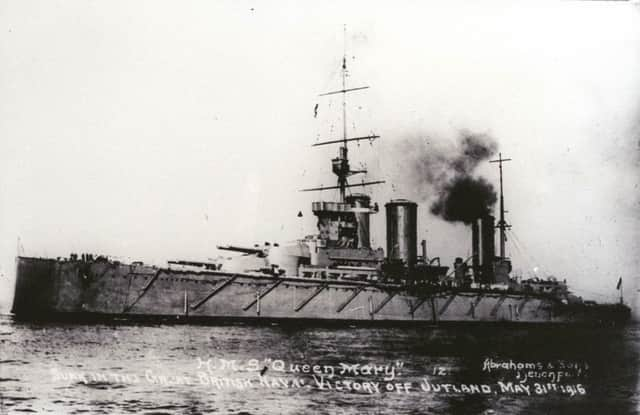The heroes who gave their lives in the biggest naval battle of the war


The two sides found themselves in direct conflict after a lot of manouvering and the largest single naval engagement of the First World War was aboutto unfold on May 31 and June 1, 1916.
In our second report on the battle, we look at the main action with the help of Gary Green from the Nautical Archaeology Society North-East.


Advertisement
Hide AdAdvertisement
Hide AdIt may have come about by accident, but the Battle of Jutland was a confused affair once it got under way.
The British Grand Fleet and the German High Seas navy engaged in fighting as the light faded and visibility got worse.
At 3.30pm on May 31, the combined British 1st and 2nd Battlecruiser Squadrons (Princess Royal, Queen Mary, Tiger, New Zealand and Indefatigable), opened fire on Admiral Hipper’s German battlecruisers.
The battle raged on for an hour, until just before 4.30pm, when the Queen Mary was hit by two shells from the German Derfflinger.


Advertisement
Hide AdAdvertisement
Hide AdThe effect was devastating, triggering at least two magazine explosions which tore the Queen Mary apart, with the loss of 1,266 of her crew. Only twenty men survived.
There was similar huge loss of life on the other battlecruisers sunk that day: six Hartlepool men from the 1,020 lost on the Invincible and a further six from the 1,017 on the Indefatigable.
Another three Hartlepool men were lost when the armoured cruisers Warrior, Black Prince, and Defence were sunk, the latter two going down with all hands – a total of nearly 2,000 men.
Fourteen ships of the British Grand Fleet were sunk, with the loss of over 6,000 men.
Advertisement
Hide AdAdvertisement
Hide AdTwenty-five were from the Hartlepools, mostly stokers working in atrocious conditions deep below decks, feeding the coal-hungry boilers.
Nine Hartlepool men who lost their lives, were serving on HMS Queen Mary, one of the newest ships. She was completed in 1913.
She was a fast, powerful ship over 700 feet in length with eight 13.5inch guns.
Her steam turbine engines could drive her through the water at a speed of 28 knots – just over 32 mph.
Advertisement
Hide AdAdvertisement
Hide AdEventually, the German High Seas Fleet broke contact and the next morning returned to its base. The cost of the battle was high for both sides; the Germans lost eleven ships and just over 3,000 men.
Both sides claimed victory. Although the British lost more ships and more sailors, the German High Seas Fleet never again challenged the Royal Navy in a fleet battle. Increasingly, German effort was directed to the U-boat war against Allied Merchant shipping.
Next week - son of a Hartlepool sailor recalls his dad’s Jutland heroism